The use of art as a form of expression due to social events started with the romanticism movement at the beginning of the 19th century. Many social events such as wars, revolutions, and economic changes during this period also changed the art, which was firmly attached to its traditions, and brought it closer to human and social problems.
Today, it appears in many forms, using technological developments, related to problems such as global warming, violence against people and women, and gender inequality. This change, on the other hand, has caused art to have an important effect on raising awareness and using it as a propaganda tool in today’s society.
The main purpose of this study is to examine the effect of art on creating awareness and change in society by using art as a form of expression. The artist’s focus on the effect he will create on the other side, as well as getting rid of his aesthetic concerns and the elements that suppress him in the production process, will increase the power of the emotions and situations he conveys and cause him to take an active role in social change. The art movements, artists and their works in the study and the reasons for the emergence of this thought were examined.
The Use of Art as a Form of Expression
The word expression comes from the Latin word expressi, which means to extract and squeeze. Depending on the context in which it is used, the word expression has different definitions. In the artistic sense, the term expression is explained as the vitality and property in which the emotions in art are externalized.
The work produced by the artist as an individual action is, of course, a form of expression. However, considering this situation only as a form of expression may not be the right approach or may be insufficient. Because art is undoubtedly much more than that. At this point, when compared with other forms of expression, the main thing to pay attention to is the images created by art in a way that leads to the future in a dreamer, intellectual and social sense.
As Nietzsche told “There is only one thing that must be possessed; It is either an innate spirit of refinement, or a spirit refined by science and the arts.”. Thus, we should adopt art as a form of expression, which is one of the ways to refine our souls at every stage of our lives.
Relationship between Art and the Society
With the existence of human, art has also existed. Sometimes it changed with the living conditions and assumed the role of conveying the period in which the communities lived, and sometimes it shaped the future of the societies. In this sense, art and society are two concepts that continue on their way without breaking away from each other. Since the artist is also an individual living in the society, the influence of the society is inevitable. Moreover, the audience he is addressing is also the same community.
In the content of the study, it has been mentioned how the artists were affected by social events such as revolutions, technological developments, civil wars, how the concept of art changed as a result of these situations, and how the unearthed works had an impact on society. It has been tried to be explained with examples that art has played an effective role as an activist propaganda tool in every period that started with the Romanticism movement and continued.
Exploring the Impact of Art on Social Change
“The specimens (objects) collected in the great museums of the world are the tip of a very large iceberg; the bottom of it lies under the surface of the limited realm of attitudes, activities that are thought of as “cultural”. When the bottom and top of the building come together, it is understood that; The reaction of the people to life, and even its real life, are always ways that are foreseen, described, interpreted and expanded by art.” Considering that art is as old as the history of humanity, it is a fact that it took advantage of social situations, was influenced and changed the society. The first examples in which the artist’s approach to social events turned into a powerful expression started with the 19th century romanticism movement.
As the art produced in this period found a response in the society, the expression forms of the artists became more free. The artist has now gotten rid of aesthetic concerns and the pressures of religious authorities and has taken on a more critical structure. All elements such as tyranny, cruelty and war in life have ceased to be metaphors and have begun to take place in art with their striking and real forms.
Undoubtedly, Francisco de Goya is one of the most important artists of this period, in which the classical period was modernized by breaking its shell. Goya, who made portraits of royalty and even the chief painter of the King of Spain, “At the same time, a liberal intellectual criticizing the oppressive and corrupt policies of employers, Goya has personally produced graphic works criticizing the abuses of power and the brutality of war.” The artist’s “Disasters of War” series, consisting of eighty-two engravings, presented the first examples of modern art, while conveying the life of the society in Spain in the most realistic and stimulating way.
Situations such as pain, misery, torture, the scenery that will alleviate them, etc. removed from such elements. In addition to this structural situation, he aimed to increase the impact on the audience with the numbers he gave to the print works and the informative notes he added to them.
The artist’s closeness to the ‘Idea of Enlightenment’ and the values of this period, as well as the fact that he was making a living through the traditional ruling circle, also caused the impression that there was an ambiguity in his attitude in the chaotic environment of Spain. With the paintings of Goya in line with the wishes of the ruling powers, the ‘Disasters of War’ series has revealed an extraordinary portrait of an artist who tries to establish his life among the realities that he puts before his own values. At this point, perhaps, considering that the “Disasters of War” series could only be exhibited thirty-five years after the artist’s death, it would be logical to look at and think of these works, which he deliberately concealed, as a way to understand Goya. The “Disasters of War” series is a true final word that the artist has hidden in his life, but at the same time allows himself to flow, and when the time comes, he wants to say even though he is not alive.
Another pioneer of the romantic movement is Eugene Delacroix. His painting “Liberty Leading the People” is one of the most original and important works of art from the 19th century to the present, describing the 1830 revolution. This work has inspired many paintings, sculptures and posters since its creation. Moreover, it is the picture of rebellion not only in content but also in form. The work, like Goya, broke the walls of the classical movement and gave new meanings to its symbols.
The artist wrote in his diary that he went to the Odeon Theater to watch Shakespeare’s Hamlet, where he met Victor Hugo and Alexandre Dumas.Romantic movement created a way for itself in the social uncertainty, political upheavals and unrest that started with the 1830 revolution in its complex period, and became an important art style until the 1848 February Revolution took place. One of the reasons why the artist’s painting is still controversial even today is that he has the power to transform the fear in society into courage.
Art Changing with the Avant-garde Movement
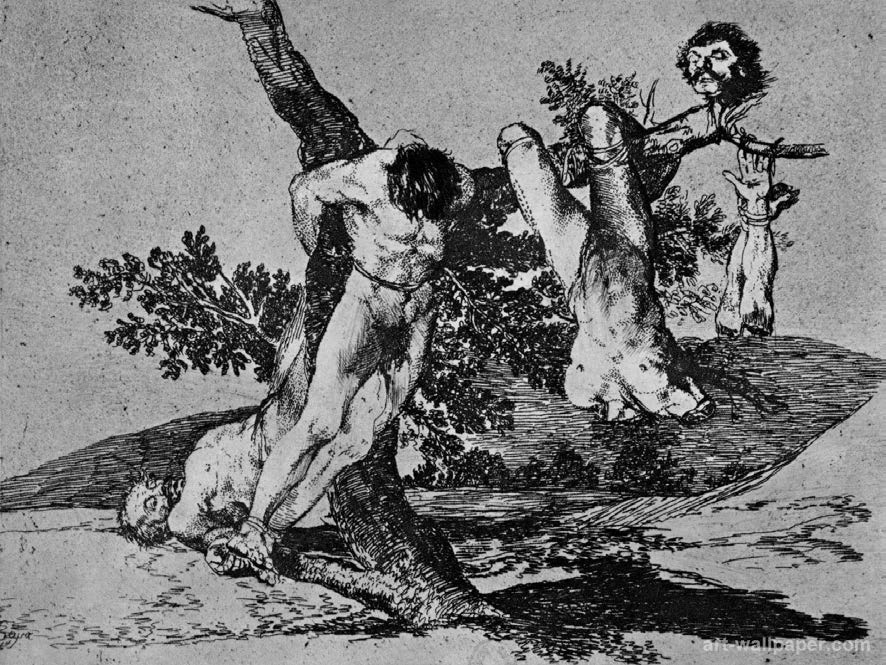
2nd Plate,1810-15, Acidoyma, Aquatint, 150×209 mm
When the current state of art is examined, it can be seen that there has been a serious divergence with the past of art history. A historical break in the past has opened a new way for art. This path undoubtedly started with the avant-garde movement. The avant-garde did this by indiscriminately rebelling against art itself.
As of this period, the artist has entered a form that is more sensitive to the problems of the society, opposes the authority and reveals critical perspectives. In Europe, where it is aimed to increase the awareness of the society, the concept of style has gained its true meaning. Although there are differences in the styles in which they convey their own discourses, the artists have acted in consensus. John Berger interpreted this period as “The history of art, belonging to the period of revolutionary changes that began with the nineteenth century, is not a successive war of styles, but a continuous inter-stylistic influence arising from the evolving social reality’s search for a broader and more complex expression in art as a core”.
The meaning of the avant-garde concept in military language is the vanguard units entering the battlefield. The avant-garde are the raiding forces that lead to the rearguard units that will enter the area, make the first contact with the raids to be encountered, fight the enemy to open new roads, and even risk death for it.
Lev Kreft defines the avant-garde as:
“The term avant-garde used in art and politics is a metaphor borrowed from the military theory of the Renaissance; battaglia, retrogard, and avant-garde represent the three divisions of a mobile army. Given the division of historical time between the past, the present and the future, and the idea of progress as a march towards the perfect society, towards humanity, the avant-garde as the name of a military formation is now perfectly suited to define the elements that embody the horizon of the future and represent the future.”
The avant-garde movement, which has been at the base of many art movements from the time it emerged until today, has brought interpretations to the relationship of art with politics with an innovative perspective. The most important common point of the movements and artists in all this inclusiveness is the necessity of art to have an oppositional attitude. Saint Simonexplained the term “avant-garde” for art as follows:
“[…] Your avant-garde will be us artists. Because the most immediate and fastest-acting power is the power of art […] Since we appeal to people’s imagination and emotions, we always create the strongest and most decisive impact.”
The industrial changes that emerged in the 1900s and the social movements that emerged with their influence led to the emergence of art movements one after another. Each emerging trend has emerged by feeding on the currents before it, but by bringing its own criticism. Therefore, the Avant-garde Movement does not represent a single period when its impact is taken into account, and its main purpose is to influence the entire history of art. The avant-garde movement, in which Futurism, Dadaism, Surrealism, Constructivism and Expressionism were added as well as the movements that started with Impressionism and continued with Cubism, and the movements that kept the historical avant-garde alive such as Fluxus, Happening and Neo Realism that emerged in the 1950s are also called Neo-Avangard.
Futurism and Umberto Boccioni
Boccioni, who is one of the most important artists with his works in the futurist movement, has handled the processes of continuity in art and the interaction of political concepts in a balanced way by establishing a strong relationship between the political and social thoughts at the center of the movement and the concept of movement and speed in the works of art.
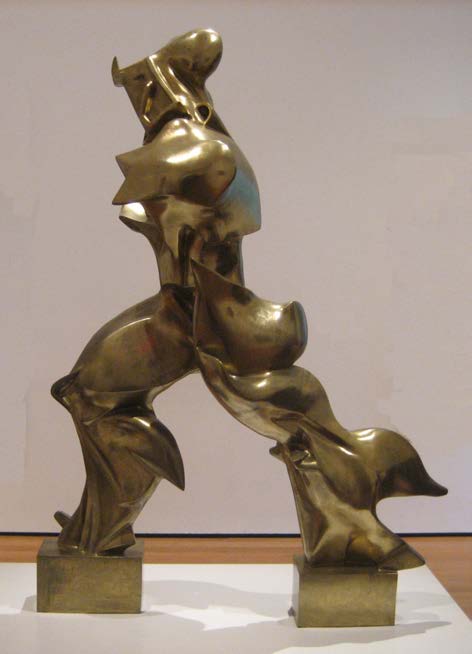
Bronze Cast Sculpture, 1913, Umberto Boccioni
The artist, who aims to bring together the viewers by making the ideas and emotional states in social thoughts stronger with futuristic elements, has added emotions and meanings to all layers of the action with the key touches in his works.
The Duchamp Effect on the Transition to Dadaism
Duchamp, who produced Cubist and Futurist paintings until 1913, presented many works to the audience under the name of ‘ready made’ after quitting painting. Considering that Dadaism is not a great art movement but an intellectual rebellion movement that clearly reveals the corruption of the social and political order, the importance of Duchamp’s works in this series and the effect it has on art will become more understandable.
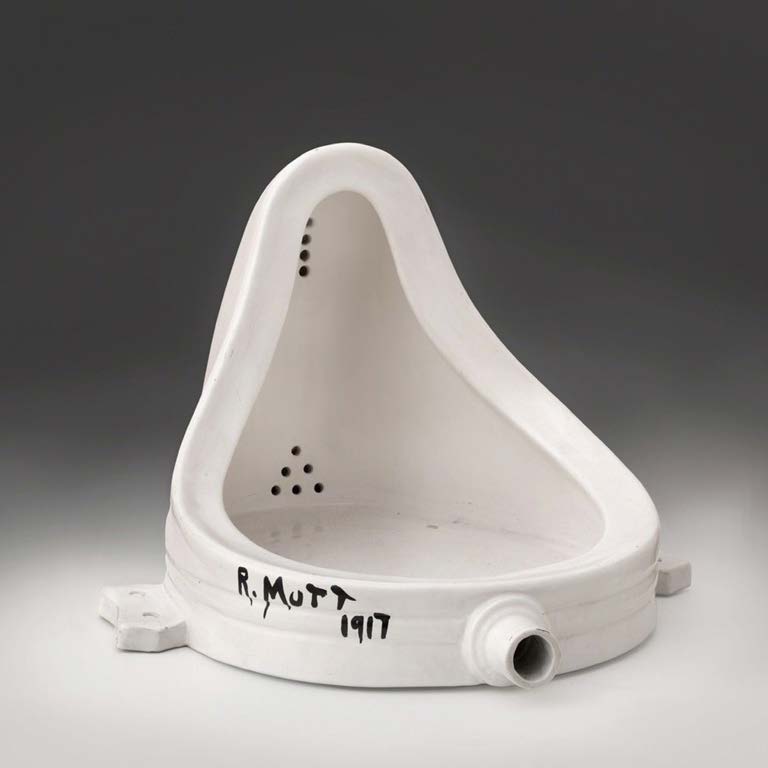
Ceramic Ready Made Sculpture, 1917, Marcel Duchamp
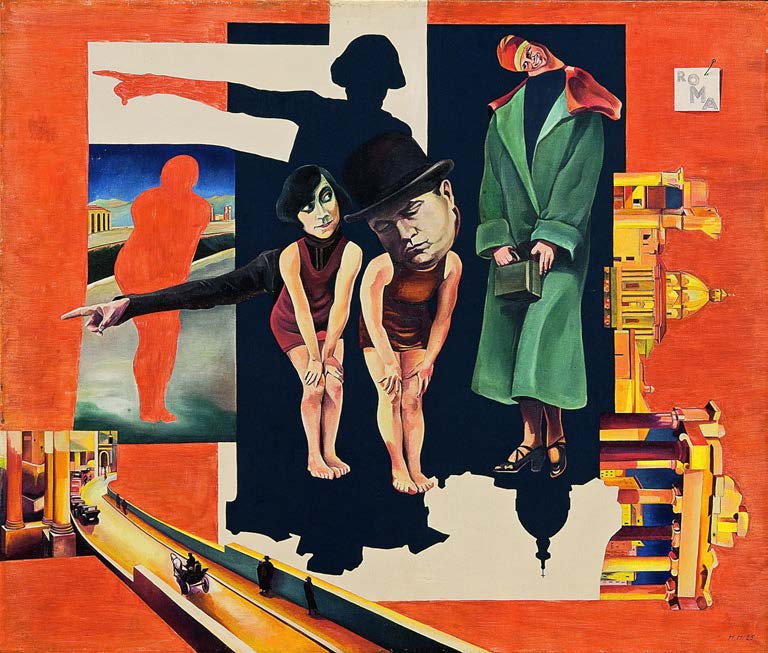
Oil on canvas, 1925, Hannah Höch
After Duchamp’s ‘ready made’ series, the content of the artwork has become more important than the technique applied. The artist applied to the exhibition organized by the Independent Artists Association with the urinal work named “Fountain (Fountain)”, which he signed only, but it was not approved to be exhibited because it was not accepted as a work of art. The important thing in this process is that it has been proven that any material can transform into something new, with a different meaning that the artist attributes to it, apart from its intended use.
Although the father of Dadaism is Duchamp, one of the most influential figures is Hannah Höch. What set her apart was her interest and criticism of accepted gender roles. Representing the ‘New Woman’ figure, which was created by breaking the chains of women’s roles approved by society, became her artistic field. In this context, he produced many works such as provocative collages, dolls and puppets, in which he harshly criticized the use of women as a commodity in the consumer society. She has become one of the representatives of feminist thought with her role in the movement.
The Effects of the Second World War on Art and Collective Art
Due to the cultural support policies announced and implemented by the United States of America during and after the end of World War II, many new museums and galleries were opened, artistic activities and production accelerated rapidly. “In this period, the number of artists increases a lot, new art schools are opened and art quickly becomes academic.” These developments lead to the professionalization of the sector, the growth of the market and the increase in prices. With this process that started in the 1940s, businessmen began to invest in art, which took the position of art to another point.
“At a time when the nation’s industrial might is diverted entirely to war production, with nothing left to sell on the traditional market, companies use art and advertising as a way to keep brands alive, to keep them in the public eye.” The new center of the developing art based in Paris is now New York. USA. He took advantage of the cultural and artistic wealth that was left idle after the war, and made all the necessary investments to become the new center of culture and to create the intellectual image that he would create in the new order. “Therefore, art was once again introduced to the stage of history as a sign of exclusivity and wealth.” The artists who came to America due to the war and the new art movements that emerged during these dates caused Jackson Pollock to take a new path and made him the face of the abstract expressionism movement.
The technique called ‘action painting’, which Pollock applies while producing his works, includes him in the expressionist movement. The artist, who uses the paint with fast and hard strokes, also used materials such as trowel, knife, paint can, iron rod in his applications.
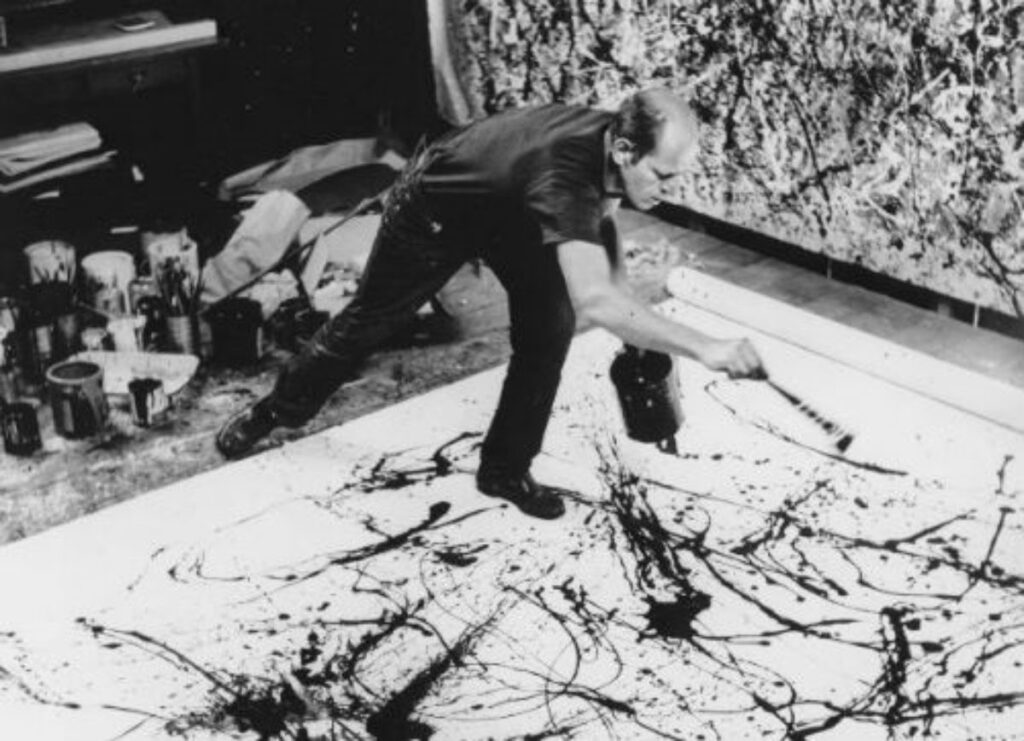
The biggest factor in developing his technique is his interest in painting methods of primitive cultures such as the Indians. The most important reason for using these techniques is undoubtedly that he finds expressing his feelings and thoughts more important than making the picture look realistic.
Another effective production process that emerged due to the devastating effects of the war is the collective movements of the artists. One of the pioneers of this movement, the Cobra Art Collective was established after the war to bring together artists who were separated from each other, withdrawn and need to be free and communicate, and to raise hopes again. In order to keep alive the philosophy of the ‘art for the people’ movement, which gave its first works in Copenhagen, Brussels and Amsterdam, it was formed in Paris in 1948 with the name Cobra, which consists of the initials of these cities, and spread all over Europe.
The poverty and the difficulties of accessing materials and people during the war period forced the artists of this period to seek new ways and to be experimental. “The Cobra group has generally provided artists with freedom in terms of aesthetics. These freedoms mean the diversification of the material used by the artists and not being completely tied to a style. All kinds of materials have entered the art, and the layers provided by sand, concrete and sometimes mud have been added on top of each other, providing the artist’s expression opportunity together with paints. As an art movement, Cobra has brought together different variations of styles. In Cobra Art, we witness that expressionism, surrealism also includes the releasing effect of the subconscious, abstract expressionism, African Art, primitivism and the colorism of Fauvism.”
Another collective formation that emerged after the war was Zero, founded in 1957 in Germany, which was most affected by the war, by Otto Piene and Heinz Mack. The first goal of the artists was to reactivate the entire art life in Germany, which was almost destroyed after the war. They would do this by discovering art from scratch, that is, starting from scratch, without using traditional methods. The fact that they would rediscover art and create from scratch led to the emergence of the name zero and this exciting trend that would have an impact all over the world emerged. With the contributions of the artists who joined them later, they produced their works with techniques that have never been tried or used before, by getting rid of the methods used in traditional art such as figure, composition and paint.
Collective Art and the 68 Revolution
A group of artists, poets, writers, critics, devoted to both modern art and radical politics in Italy in 1957; they started the Situationist International, believing that artistic practice is an act and that through art the revolution will begin. At the beginning and therefore at the base of the collective, there were artists who were representatives of the Cobra, Imaginist Bauhaus and Letrizm movement.They took an active role in the middle of the French Revolution, organized actions, and became organized with an anarchist attitude against institutional art. The Situationist International was opposed not only to capitalism and the concepts created by it, but also to the academic and modern understanding of art.
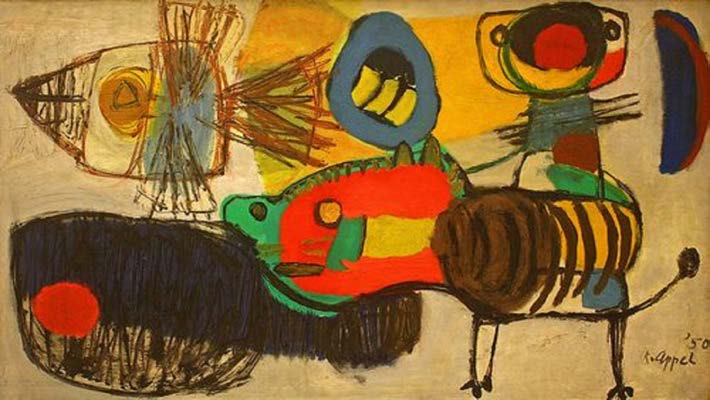
1950, Karel Appel
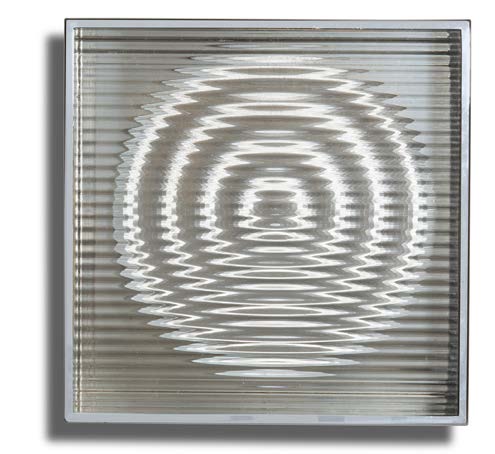
Aluminum, chrome plated brass and engine,1972, Heinz Mack
“As their names suggest, internationalism is the main element that brings this group together. Their main axes are contemporary art, which they attribute utopian meanings, and radical politics with conscious provocations and provocations. At the same time, they established close relations with Henri Lefebvre, who has written some of the contemporary anthropologists’ playbooks on urban justice and the citizen. S.E. has worked on the moment of life that has been created collectively as an extension of his own plays and artistic understanding in cities that do not allow people to live. A situationist is someone who works at the theoretical and political level to construct these situations. It is here that the most provocative doctrine of this group emerges; by focusing on creating situations, actually creating a productive uncertainty.”
Their fame reached its peak with the slogans they produced (Consumption is the Opium of the People, There is a Beach Under the Cobblestones, etc.) in the intense agenda of the revolution in 1968, the invasion of Paris, and the student movements, but this situation also prepared the end of the collective. As their reputation grew, the fear of being consumed by the ‘The Audience Society’ they criticize came to light. Continuing to influence the numerous anti-capitalist and revolutionary art groups and individuals that exist today, the Situationist International quietly disbanded in 1972.
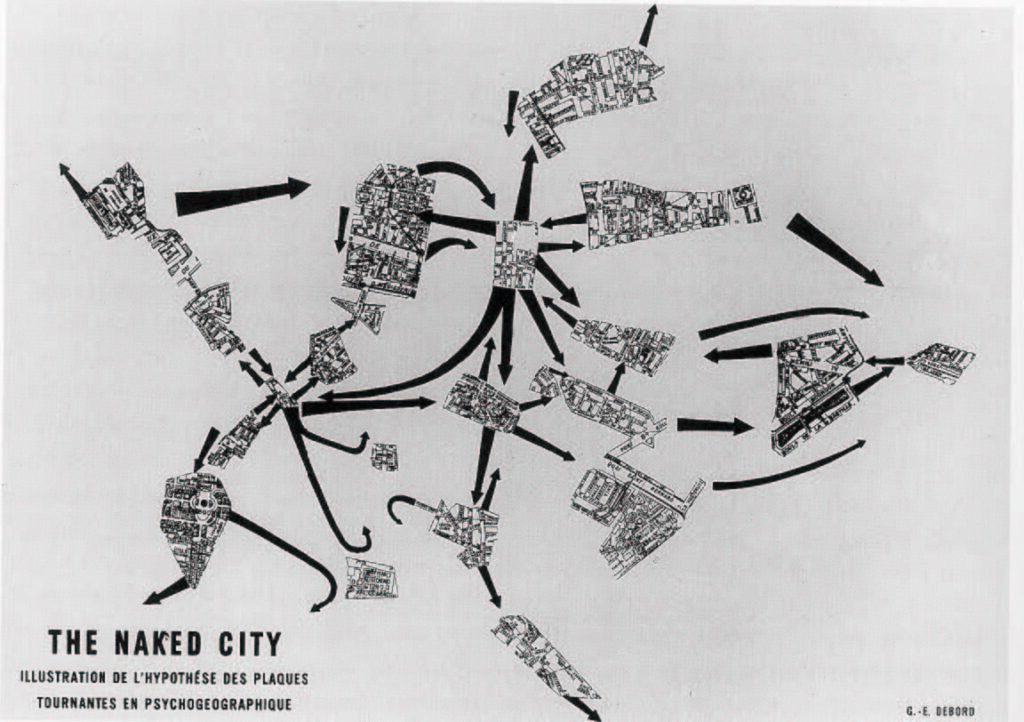
Edition, 1957, Guy Debord, Imaginary Bauhaus
A New Object of Expression in Art: The Human Body
“Performance artists generally focus on the human body; They questioned issues such as gender, sexuality, race, ethnicity, reproductive rights, gender equality, social problems, political problems, violence, and beauty in relation to the feminist approach and used them as a tool to convey some thought-provoking messages.”
In the 20th century, a period when traditional concepts in art were destroyed, the new freedoms that Duschamp added to the understanding of art by using a urinal were also influential in the approaches of the artists. The ability of artists to produce independently of institutions, materials and rules has revealed an approach that embraces art with life, can center the dreams of the artist and share the audience with these dreams.American artist Allan Kaprow, the creator of the Happenings art movement, is an artist who combines all the elements described above with his art. Bringing a new breath to 20th century art, Kaprow’s approach to art is at a point that will cause the concepts of modernism and avant-garde, which form the foundations of contemporary art, to be examined.
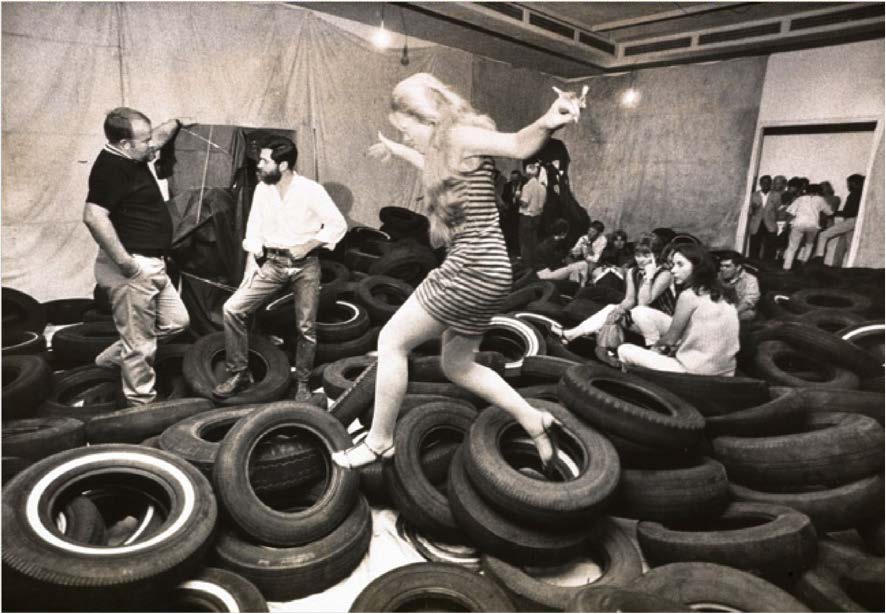
“‘Happenings’ originally started as tightly scripted events where viewers and actors followed clues to experience the art. According to Kaprow, a Happening was “A game, an adventure, a series of activities that participants do for the sake of the game.” What’s more, Kaprow says, the Happenings “are simply happenings”. There was no structured beginning, middle, or end, and no separation or hierarchy between artist and audience. It was the audience’s reaction that decided on the artwork, making each Happening a unique experience that cannot be replicated. Participatory and interactive, in order to break down the “fourth wall”, the wall between artist and observers, observers not only “read” but also become part of the art by interacting with it.”
The Artist Liberated by the Conceptual Art Movement
Another formation that emerged in this period is the Fluxus artist collective, which also includes performance art. Its foundation dates back to the 1960s, when anarchist and revolutionary thought also liberated art. “The word Fluxus expresses the continuity, change and renewal in nature and human life, and the opposition to stagnation. Accordingly, in a universe that is constantly changing, a work of art is not a completed work, but a constantly changing and developing process. Fluxus refers to the flow of life by emphasizing creation and destruction, and more generally the temporary.” This movement, like the activist movements of the same period, confronted academic and normative art. They attached great importance to improvisation and randomness in the work they produced. They even stated that what they have uncovered is a work of art, and that they are not artists themselves. They tried to prove that art is not a consumed commodity and the artist is not a special individual. Instead of tangible works that serve this purpose, they preferred to offer experiences that touch the mind of the audience and leave traces.
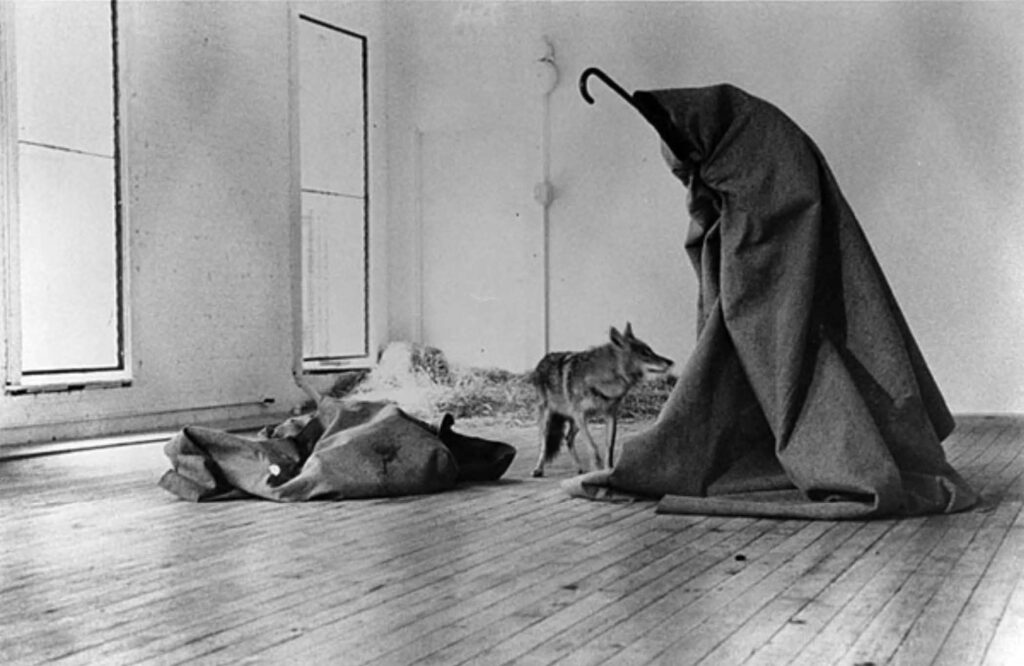
Performance, 1974, Joseph Beuys
Joseph Beuys, one of the 20th century revolutionary artists, often referred to his political views in his works. The basis of his art is the spiritual and intellectual development of man and his use of art as a healing tool. He created his works by capturing the deep meaning of objects and adding different meanings to them.
The artist combines action and artwork in a single framework. The work of art is the act of the artist itself. The objects that can be exhibited are only sediment. If we give an example; Beuys participates in the May Day demonstrations in Berlin’s Karl Marx Square. He leans on a red-colored broom and just watches what’s going on, and when the show is over, it’s the artist’s turn to act. He sweeps the whole square with his red broom. He stuffs the rubbish into bags carried by his two assistants, one with black skin and one with yellow skin. This is the piece of junk that will be exhibited in the gallery after the action is over.
Reflection of Feminism Movement in Art in Turkey
Nil Yalter, who settled in Paris at the age of 27, was greatly affected by the social and political events in Europe in the 70s. The ‘early feminist debates’ that started in these years also attracted a lot of attention in the political life she was involved in. In her workshop, she held meetings on feminism and the place of women in the art community, and discussed not only the issues of immigration, which she also experienced, but also the discrimination that women experience in society. She chose the path of feminist art in order to convey the problems of women who have similar problems with her and to express herself. With her works, she created a social awareness about women’s rights both in France and Turkey.
Changing World and Contemporary Art
“Contrary to modern art, it is difficult to examine according to production methods and trends; environmental and social awareness outweighs; mainly interested in feminism, globalization, environment, bioengineering, technology-human relationship, AIDS and multiculturalism; They are art forms that have survived from the 1960s or 1970s (in other words, after the time when modern art or the Modernist period is considered to have ended) and are generally called ‘contemporary’ because they do not have any unifying characteristics like a movement or style.”
The avant-garde thought that emerged at the beginning of the century had passed through the lives of the 68 generation and finally reached the undefined point it wanted to reach. There was a new world in which art production was liberated, individuals who had problems and wanted to produce art were freed from the yoke of academia, expressed themselves freely, and art turned into a real form of expression. Art had emerged from galleries and exhibition spaces and met the street. Then, with the developing telecommunications technology, it would spread to people’s homes and phones.
The shining star of this recent period was Jean Michel Basquiat. He couldn’t adapt and after he ended his education life, he started to create his works on the streets of New York under the pseudonym SOMA. In his graffiti works, he used unprecedented images to reveal his criticisms of social issues. The art of graffiti, which emerged during the war and revolution periods, became popular again in America in the 1970s and turned into a means of expression of the society.
The subjects that Basquiat mentioned most in his graffiti were racism, suburban life, the realities of the street, conflicts and death. What made him different from the others was his ability to combine his tough demeanor with his boyish style.“The artist was criticizing the discrimination against the black community with his political stance and his unique style. He conveyed his hatred of racism into his works with successful symbolism and expressionism. Motifs and important figures of black culture have always been a source of inspiration for the artist. In an interview he gave in 1986, he mentioned that black culture was not adequately represented in the art world. One of his works, in which his black identity came to the fore, was the Slave Auction.”
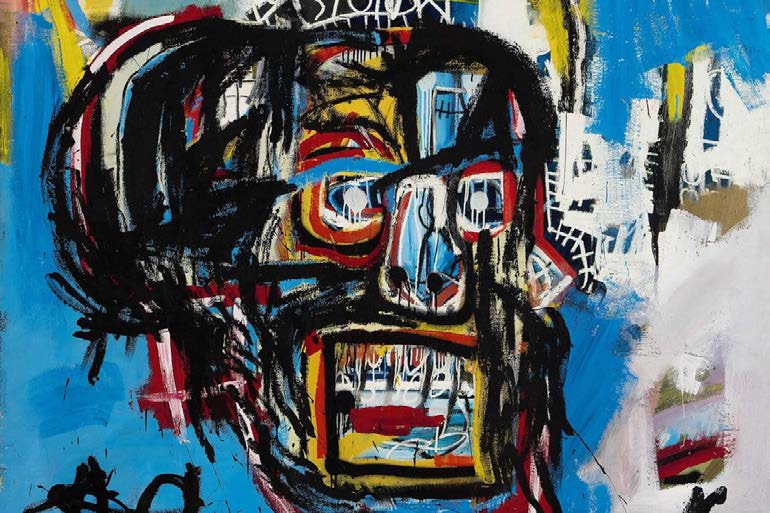
1982, Jean Michel Basquiat
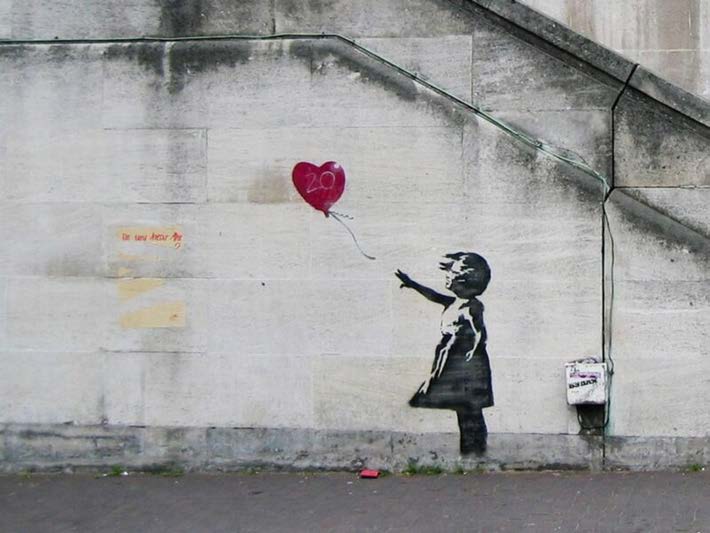
Graffiti, 2002, Banksy
Afterwards, another artist who carries the street flag of art and works on social issues is Banksy. “One of the world’s most mysterious artists, legendary street artist Banksy, of whom almost nothing is known except that he is British, is an activist who draws more attention as he refuses to be famous and hides behind his mask.” The works of the artist appeared in London and Bristol, England, in the early 1990s. She usually takes an anti-capitalist and anti-war stance in her works. She talks about these issues through the lives of people who have been caught in the middle of conflicts and problems in all these processes. She is an artist who is concerned about the world’s most touching problems. The images he frequently uses in his works are the elderly, soldiers, policemen, monkeys, children and balloons. Banksy’s most important work is ‘The Girl with the Red Balloon’. What he wants to convey in this work is that there is always hope.
Contemporary Opposition Art and Social Change
Ai Weiwei has searched for today’s truth all his life; continued his struggle for fundamental rights and freedom of expression. Through his work, he emphasized the place of the individual in society by drawing attention to important humanitarian problems and human rights violations. He describes the artist as the key figure of social change. He has the view that his political stance and his art are an inseparable whole. It sees art as an opportunity to raise new questions beyond an aesthetic application. As a conscious artist, he directly confronts current issues both in his own country and around the world. Weiwei defines creativity as the power to take action. He used different transformation methods while questioning the value systems that existed throughout his art life.
Expressing his critical thinking towards social problems through art, Ai Weiwei did not compromise this approach despite the pressure policies established by the administrations on him. Since the beginning of his art, he has led an oppositional path to his community. He also states that social change is one of the foundations of producing art. The artist presents the relations between activism, politics & politics and contemporary art as a whole, due to the works he produces, his daily life style
and his focus on social problems. It tries to draw attention to the oppressions, human rights violations, not only in its own country, but all over the world, with the works it produces, and ensures that people are aware of these situations.
Conclusion
Modernity has been a period in which the most intense and rapid social change has been experienced in the entire history of humanity, and effective changes have emerged in terms of art. With the emancipation of art and the artist, a bond has formed between art and society and has led artists to produce works that address the problems of society. At the same time, it has changed the expression forms of the artists, the materials, techniques and styles they use. With the world wars, political and political turmoil, innovations in the industry and the liberation of art from the traditional rules, it took on a completely different face. While art became stronger internationally in the second half of the 20th century, especially thanks to artistic investments (museums, galleries, fairs, etc.) made in the United States, on the other hand, by adopting a conceptual understanding and limiting space (gallery, museum, etc.) etc.) out of its influence; has experienced the process of carrying it to living spaces, streets and nature. While social changes and transformations trigger artistic changes, the organized attitude of art and the artist in these changes is important in terms of making the changes permanent and placing them in memories.
When today’s changing social problems, increasing administrative pressures and developing technological fields are considered together with the recent change of art; there will be hope for art to find new ways to express itself better and increase interest in social problems.
Suggested Readings
– Transformation of the Concept of Artivism into Form in Contemporary Ceramic Art / Banu Burçin Yıldırım / 2021
– The Phenomenon of Avant-garde in Art from the 1950s to the Present
http://dspace.yildiz.edu.tr/xmlui/bitstream/handle/1/6613/0047275.pdf?sequence=1&isAllowed=y
– Jackson Pollock: The Face of American Abstract Expressionism
https://indigodergisi.com/2016/10/jackson-pollock-american-abstract- disavurumculuk/
– Remains of the Cobra
https://www.sabah.com.tr/cumartesi/2012/07/07/kobradan-gunumuze- the rest
– Experimental Approaches in Cobra Art
https://dergipark.org.tr/en/download/article-file/974814
– Art from Scratch: Zero
Sıfırdan Başlayan Sanat: ZERO
– The Birth of Performance Art and Its Reflections to Today
https://dergipark.org.tr/tr/download/article-file/338508
– Refinement of Traditional Art and Conceptual Response
https://www.ulakbilge.com/makale/pdf/1530355856.pdf
– Jean-Michel Basquiat: Contemporary Art’s Contrary Genius
https://iyikigormusum.com/sanatin-aykiri-dahisi-basquiat
– Hannah Höch: Dadaists Criticizing Twentieth-Century Society
– Hannah Hoch | German Artist
https://delphipages.live/tr/gorsel-sanatlar/photography/hannah-hoch
– 1968 Revolution and the Situationists
https://www.e-skop.com/skopbulten/1968-devrimi-ve-situasyonistler/1426
– Situationists and Art
https://www.e-skop.com/skopbulten/situasyonistler-ve-sanat/4703
– The Situationalist International, A Critique of Modernity
http://dspace.yildiz.edu.tr/xmlui/bitstream/handle/1/11508/0072689.pdf?seq uence=1&isAllowed=y
– Artistic “Formations” Dedicated to Life: Alan Kaprow
http://lebriz.com/pages/lsd.aspx?lang=TR§ionID=2&articleID=456&bhcp=1
– The Birth of Performance Art and Its Reflections to Today
https://dergipark.org.tr/tr/download/article-file/338508
– Allan Kaprow
https://stringfixer.com/Allan_Kaprow
– Searching for an Alternative Art: Happening Res.Asst. Pelin Elcik Yorgancioglu
https://dergipark.org.tr/tr/download/article-file/711922
– Ai Weiwei’s Opposition Art
https://dergipark.org.tr/tr/download/article-file/636884
– Examples of Ai Weiwei’s Work
http://aykiriakademi.com/sanat/aykiri-akademi-sanat-gorsel-sanatlar/ai-weiwei-nin-onemli-sanat-calismalari
– Nil Yalter: Legendary Representative of the Feminist Art Movement
https://www.sanatperver.com/nil-yalter/
– Internet Art on the Axis of Social Change and Artistic Transformation: Net.art
https://asosjournal.com/?mod=tammetin&makalename=&makaleurl=e236dd69- e6d9-4171-9511-1077dff36dae.pdf&key=49552
References
Baynes, K. (2008). Toplumda Sanat [Art in Society].
Clark T.(2011), Sanat ve Propaganda[Art and Propaganda], çev : Esin Hoşsucu, Ayrıntı Yayınları, 2011
Fleming, W.M. (2004) , Arts and Ideas,Wardsworth Publishing
Berger J.(1987), Sanat ve Devrim[Art and Revolution, Trnsltd. Berker B.], V Yayınları
Kreft L.(2008), “Evrensellik ve Keskinlik, Doğalcılık ve Kültürcülük”, Sanat Siyaset, Sanatın Siyaseti ve Siyasetin Sanatı, ed. Ali Artun, çev. Mustafa Tüzel, Elçin Gel, Esin Soğancılar, Haluk Barışcan, Nuran Gürbilek, Sabir Yücesoy, Ufuk Kılıç, Emrehan Zeybekoğlu ,İletişim Yayınları, p.37
Artun A.(2010), Sanat Manifestoları – Avangard Sanat ve Direniş, İletişim Yayıncılık, p.20
Crane D.(1993), The Transformation of the Avant Garde: The New York Art World, 1940–1985,p.10
Çimen,Ö. , 1950’lerden Günümüze Sanatta Avangard Olgusu,p.29
Karaağaç A. (2016) Jackson Pollock: Amerikan Soyut Dışavurumculuğun Yüzü, Accessed at :https://indigodergisi.com/2016/10/jackson-pollock-amerikan-soyut-disavurumculuk/
Burunsuz, Muteber. (2019). Cobra Sanatı’nda Deneysel Yaklaşımlar. Anadolu Üniversitesi Sanat & Tasarım Dergisi. 340-349. 10.20488/sanattasarim.691281.
Avşar Karabaş, P. & İşleyen, F. (2016). Performans Sanatının Doğuşu ve Günümüze Yansımaları . Uluslararası Kültürel ve Sosyal Araştırmalar Dergisi , 2 (2) , 340-350 . Retrieved from https://dergipark.org.tr/tr/pub/intjcss/issue/30959/336604
Allan Kaprow (n.d) – Accessed at : https://stringfixer.com/tr/Allan_Kaprow
Suhal Sağlan(n.d) – Sanatta Devrimci Bir Akım: Fluxus ve Joseph Beuys / Accessed at : ttps://itaatsiz.org/?p=447
Ulutaş(2021), TOPLUMSAL DEĞİŞİM ve SANATSAL DÖNÜŞÜM EKSENİNDE İNTERNET SANATI: NET.ART (INTERNET ART WITHIN THE CONTEXT OF SOCIAL CHANGE and ARTISTIC TRANSFORMATION: NET.ART) – Akademik Sosyal Araştırmalar Dergisi, 9, 115, Nisan 2021, s. 119-134
